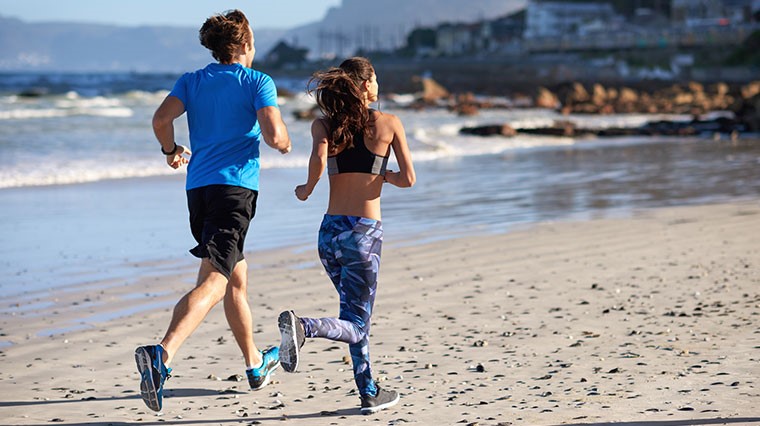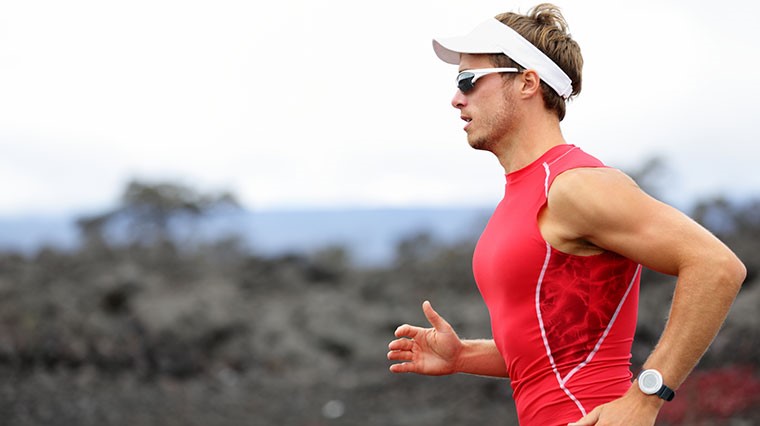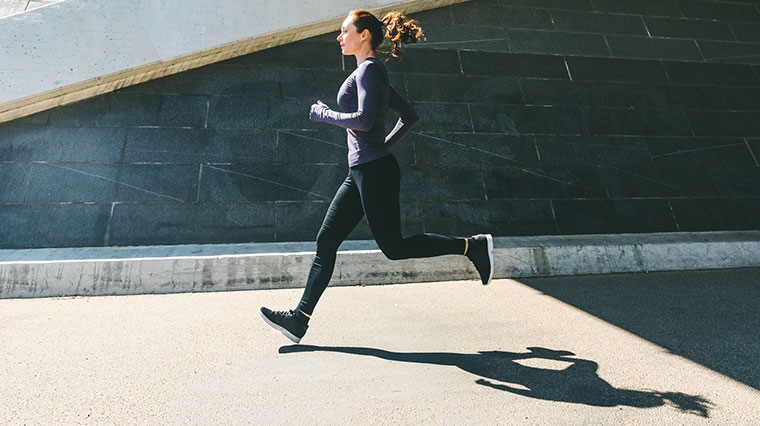A Runner's Guide: How To Improve Your Running Form From Head To Toe

We’re not going to say there is a
perfect one-size fits all running form, because you’re unique and so is the
way you move.
If you’re an experienced runner that
usually runs free of aches, pains and injury, chances are you’ve found what
works for you and trying to make significant changes may actually decrease your efficiency
(yikes!).
However, if you’re a newbie learning
the ropes or running is causing you niggling pain or twinges in your muscles,
these tricks are a useful guide to prevent injury and improve your running
efficiency.
Let’s work from the head down.
Head
As spiffy as your new running shoes are,
don’t stare at your feet, and although that cloud in the sky looks like a
fluffy bunny rabbit, reduce the temptation to stare and giggle at it manically
as you run.
Always look forwards, keeping your head
level (imagine a string attached to your head being pulled up by a giant puppeteer)
and naturally scan the horizon with your chin slightly tucked in – not too far
as it may restrict your airway, and not jutting out as it’ll cause tension in
your neck.
Shoulders
Feel your shoulders creeping up? Having
them high and tight is a sign of tension and it’s common when your muscles
become fatigued over a long run.
We don’t want tension killing your runner’s
high so take a page from Taylor Swift’s book and shake it off (or circle your
shoulders to release tension), so you can focus your energy efficiently into
your run.
Keep your shoulders relaxed and loose, but not slouched and avoid side
to side swaying motion – they should be level.
Arms
Your arms propel your run forward, swinging like a pendulum from your shoulder joint, and their natural forward and back motion should be in sync with the running stride of your legs.
Avoid your arms from crossing over your
midline as this can interfere with your balance. Keep your elbows at about a 90
degree angle (a little less is okay) with arms between the level of your waist
and chest as they smoothly pump by your sides.
They should remain close to your body, with
compact movements to conserve energy.
Hands
Don’t clench your fists tightly. Imagine
you’re holding a cookie or potato chip (yum!) gently cupped in your hand, with
your fingertips just touching the inside of your palm, allowing your hands to
remain relaxed.
Torso

A straight torso (no slouching guys!) improves your lung capacity and encourages an optimal stride length for running while minimising risk of injury to your back and lower body – if your head and shoulders are in proper running form, your torso should naturally follow in line.
The ‘run tall’ mantra encourages a straight
posture and you can use a simple breathing exercise before your run, following
a walk break and when you’re feeling fatigued to achieve this.
Inhale deeply and maintain that posture as
you exhale, allowing your breathing to guide your body and to keep your head,
shoulders and hips in proper alignment.
Hips
Your hips aren’t just for shaking it on the
dance floor or setting a new hula hoop record - they’re a critical component of
proper running posture as your body’s centre of gravity. If you’re following
our above tips regarding your upper body, particularly head, shoulder and
torso, they should naturally be in correct alignment – pointed straight ahead.
An excessive forward lean from the hips can
throw you off balance and increase impact forces on your body, while leaning
back may result in overstriding and heavy heel landings, putting strain on your
back, hips and knees - ouch!
A slight lean promotes running efficiency
(thanks gravity!), but it should be from the ankles (keeping your body in
alignment), not the hips or waist.
Although this can occur without conscious
effort, some runners find it tricky to master – it helps to be aware of how
you’re shifting your weight as you run to identify if you’re leaning correctly.
Knees/Legs
Are you an endurance runner or sprinter?
Endurance runners conserve energy by low, quick knee lifts and benefit from a
short stride to minimise strain on the muscles, whereas sprinters use high knee
lifts to generate speed and power for explosive movement.
Your knees are natural shock absorbers –
keep them slightly bent to ensure smooth impacts and maximum comfort throughout
the repetitive motion of running.
Feet

Run light on your feet with a short, virtually soundless stride – your neighbours shouldn’t think a baby elephant is galloping up the street and the softer impacts protect your body from stress.
Rather than focusing on your foot strike
(forefoot, midfoot or heel strike) consider where your foot lands in relation to
your body – they should impact the ground directly beneath your hips/knee for a
smooth gait.
Your running cadence (the number of times
your feet strike the ground per minute) may naturally improve as a result, as
opposed to overstriding (like the runner above) – where you're chasing your feet as they strike the ground in front of your
body, creating a lengthened, choppy gait and fewer strides per minute.
Overstriding is a frequent mistake among beginner
runners trying to cover too much ground in one stride, acting as a ‘break’ in
your momentum and increasing risk of injury as you land harder on the pavement.
Just Remember...
Any dramatic changes to your running form should occur gradually to allow your muscles to adapt smoothly and without injury.
Happy running!
